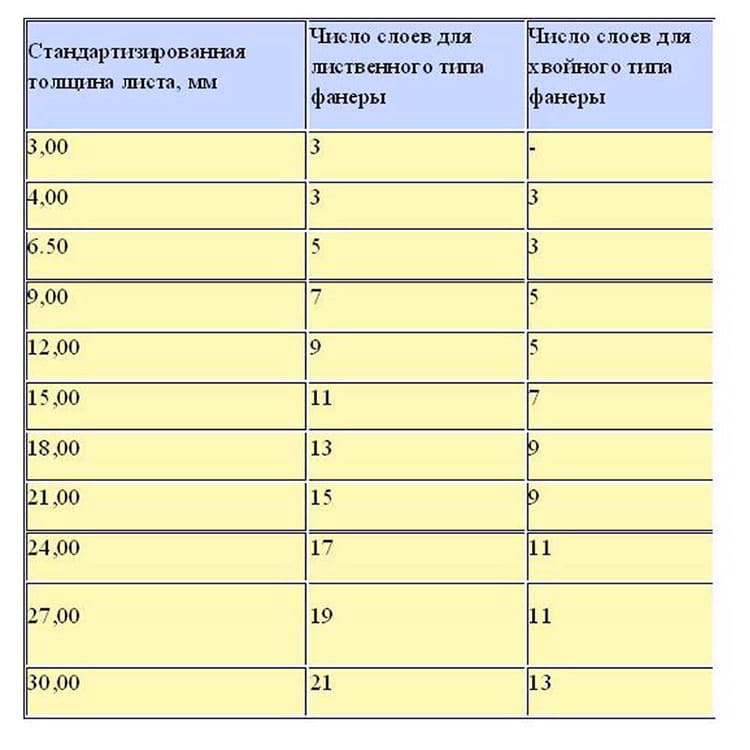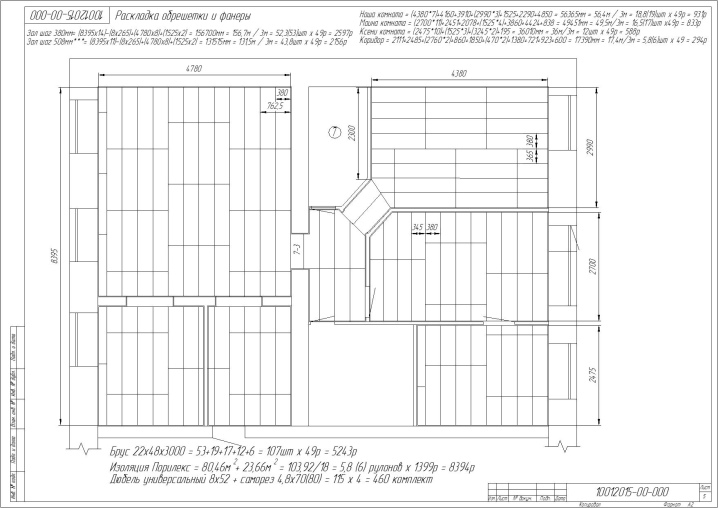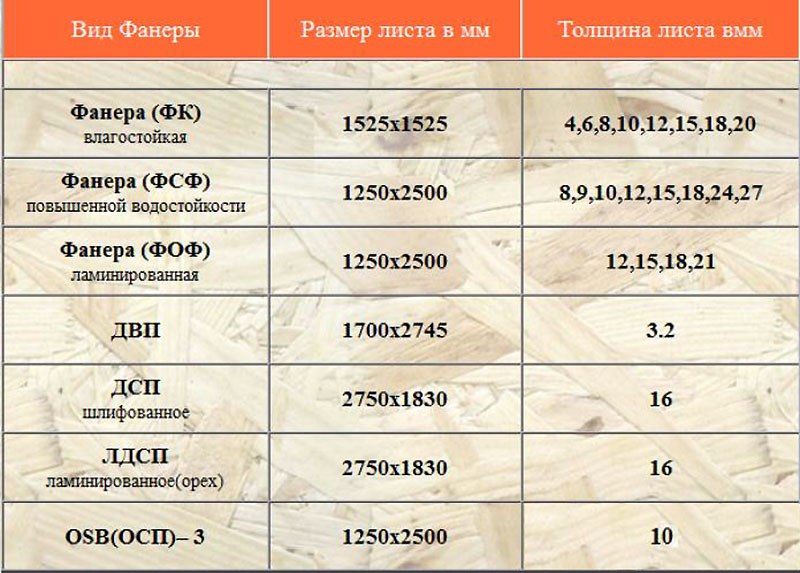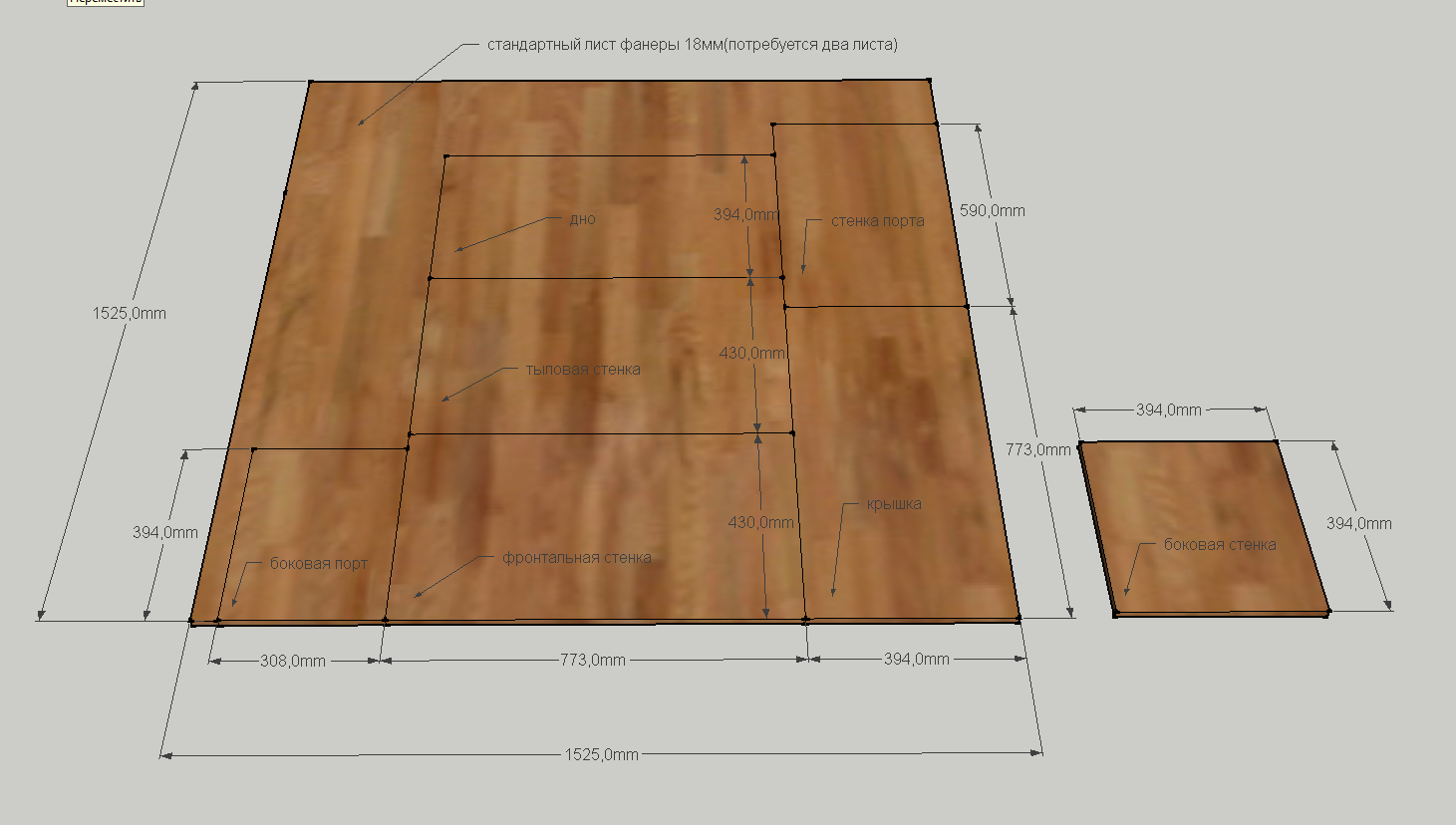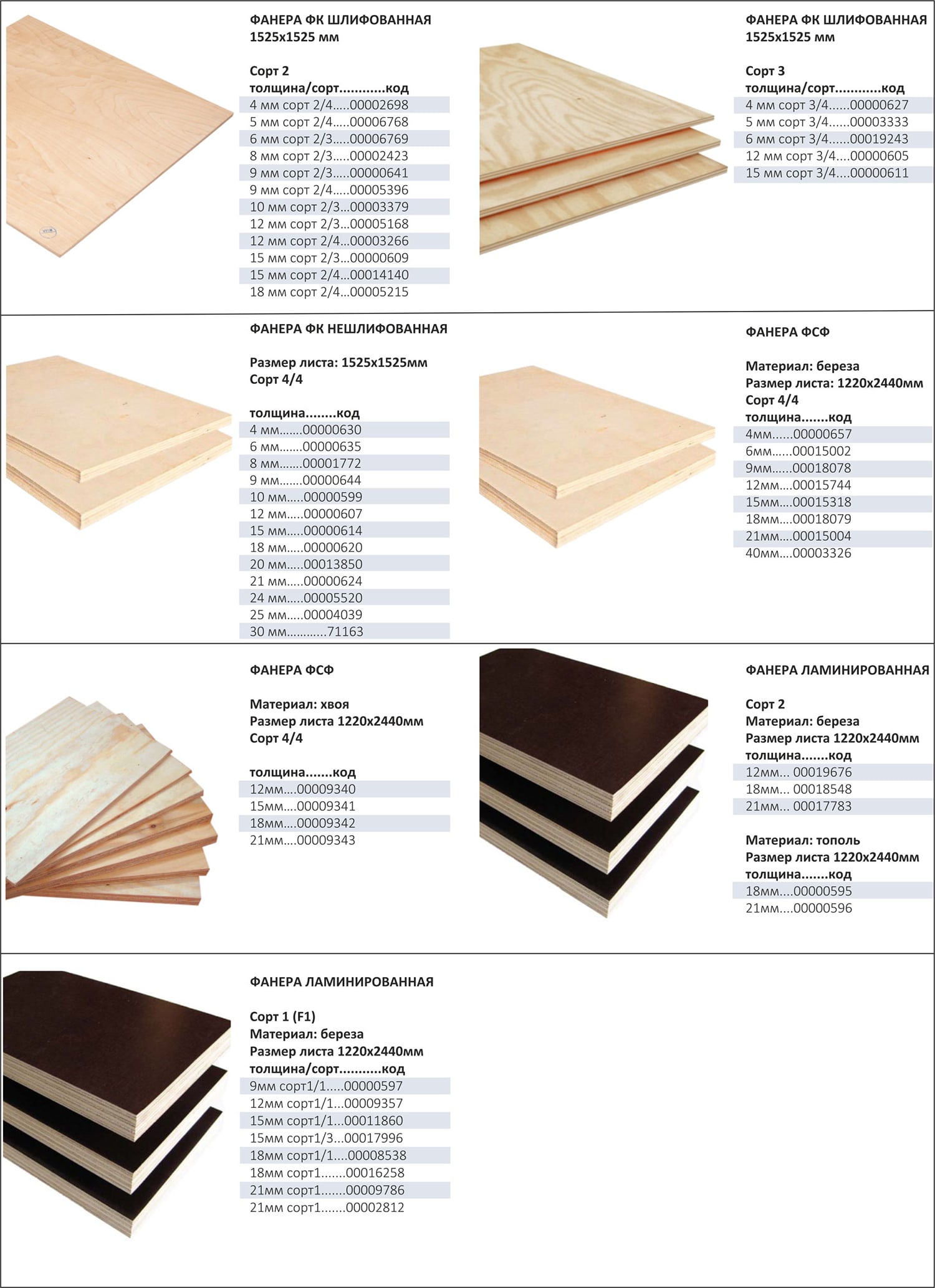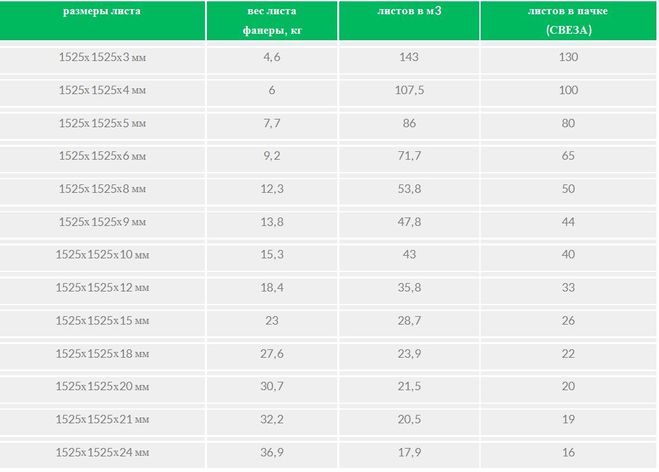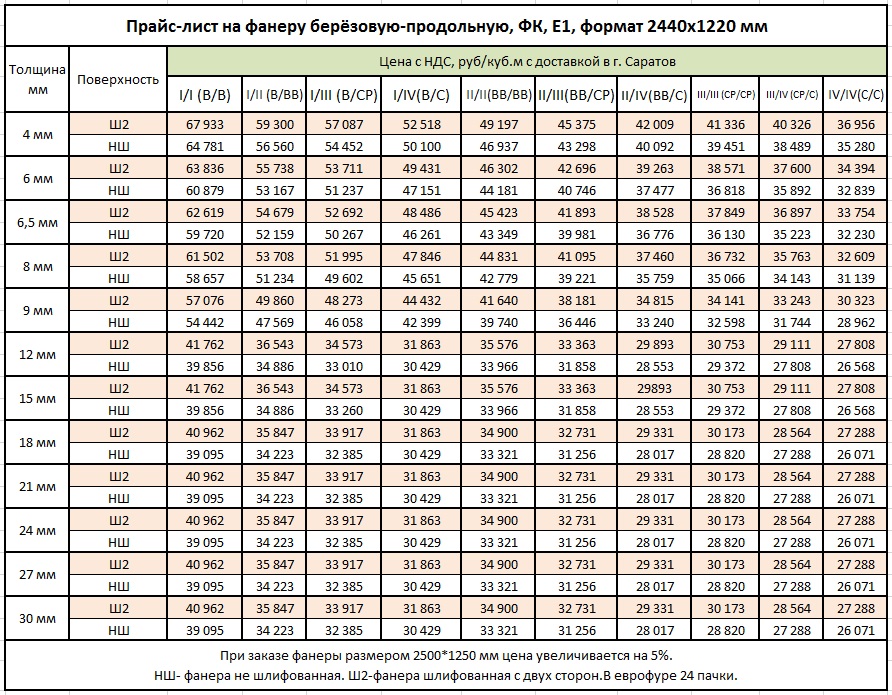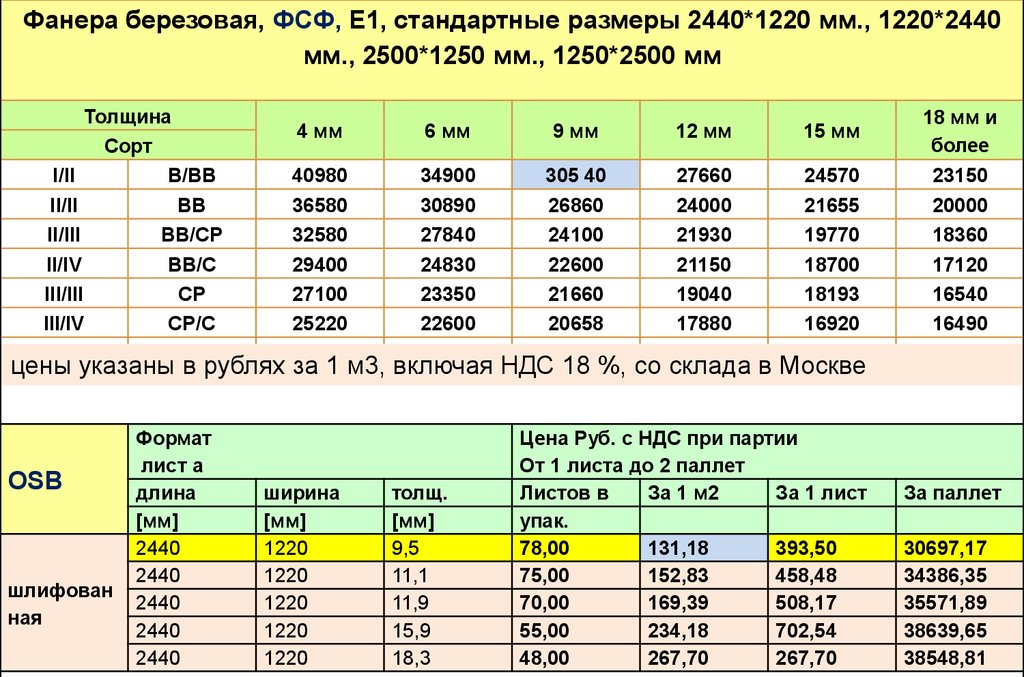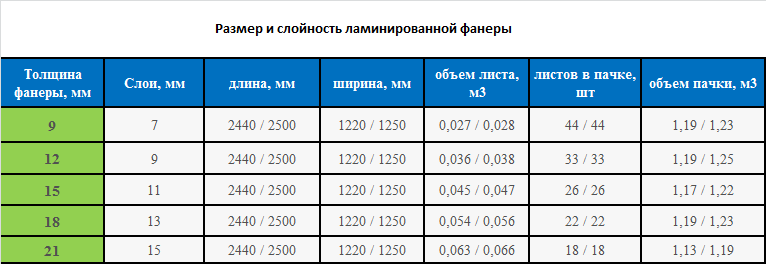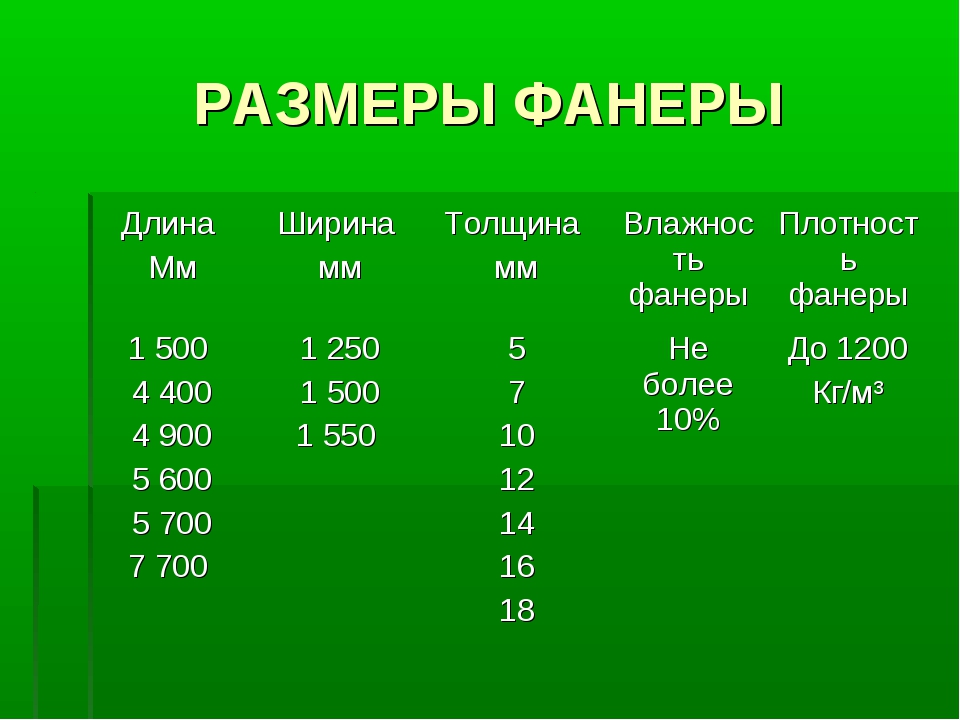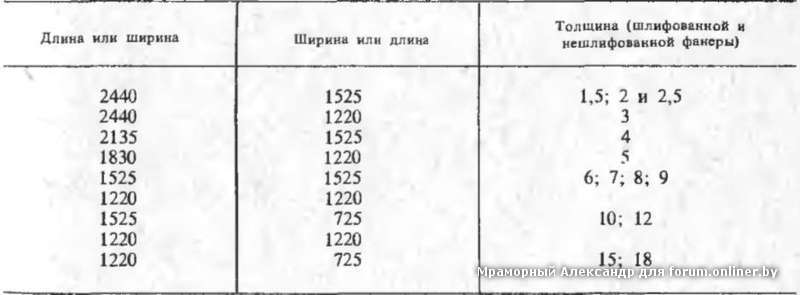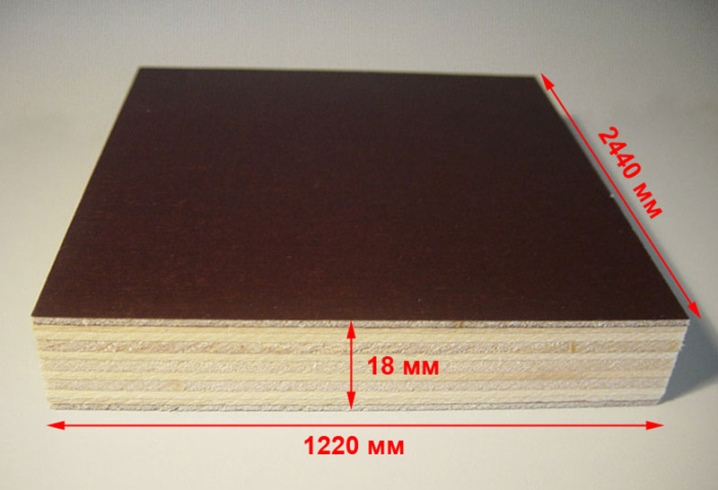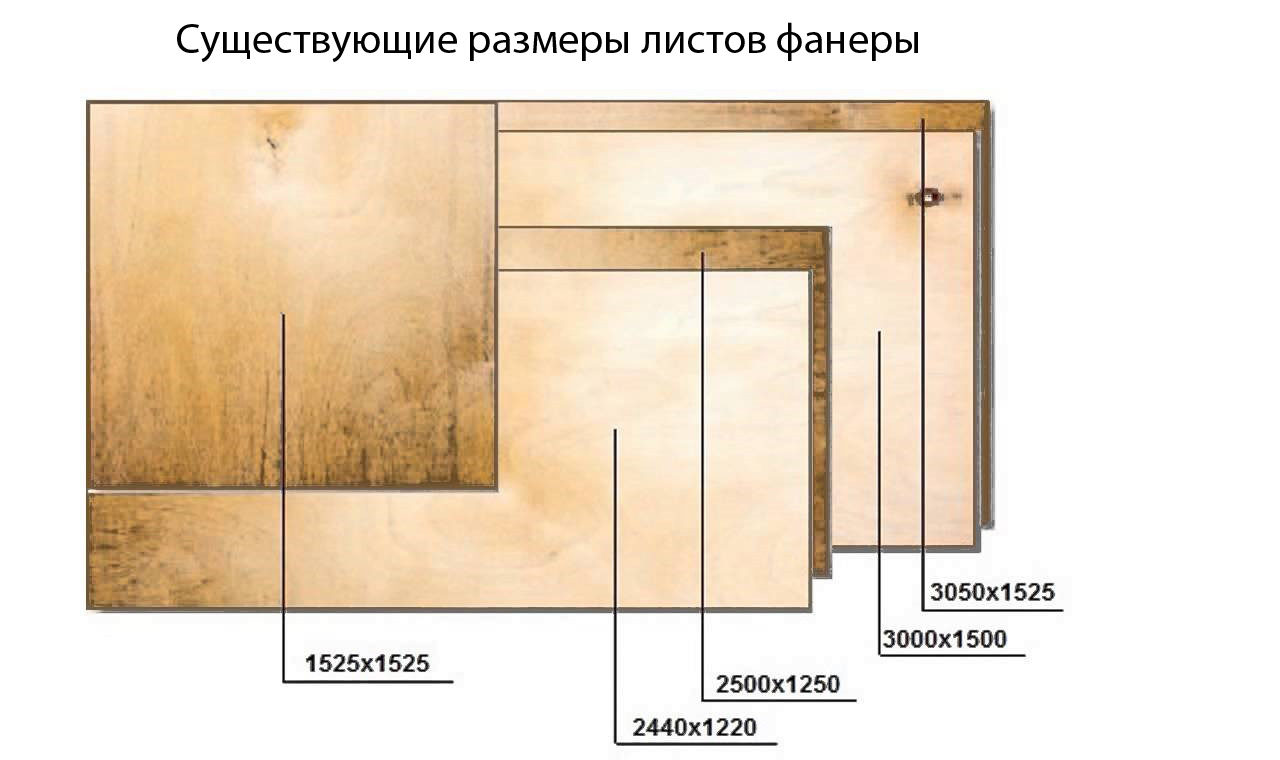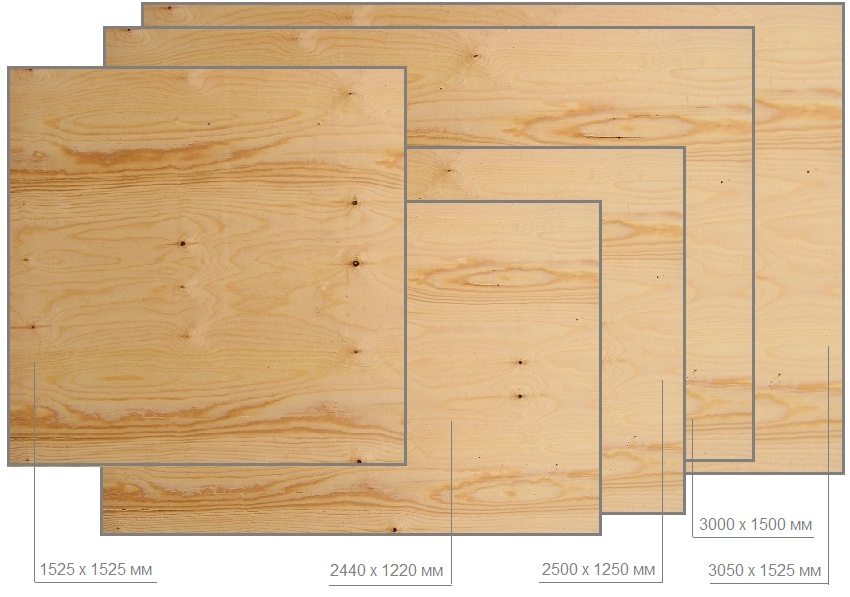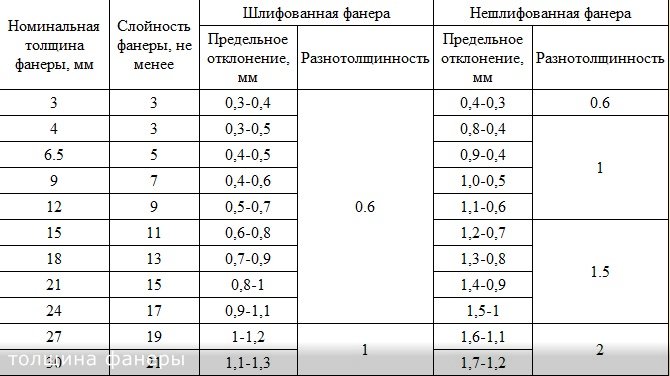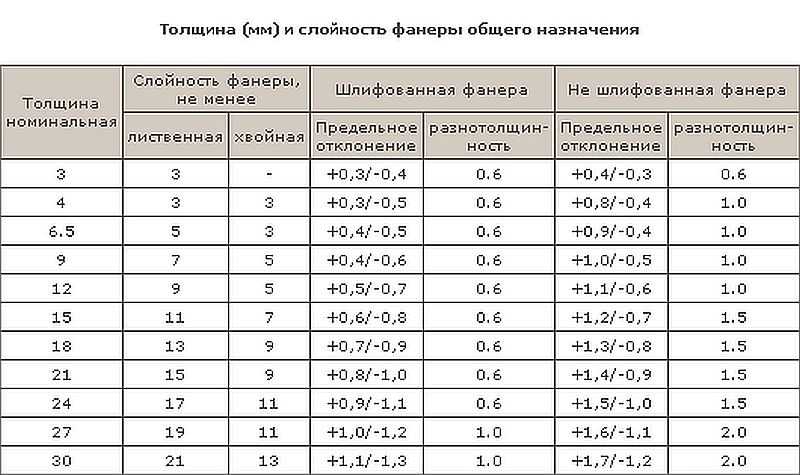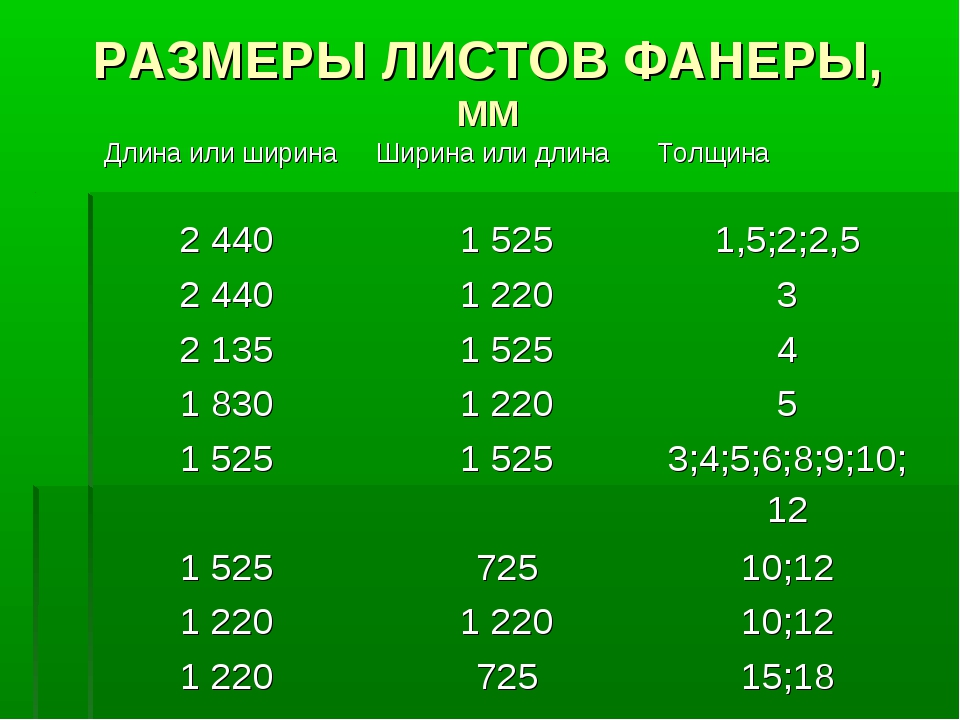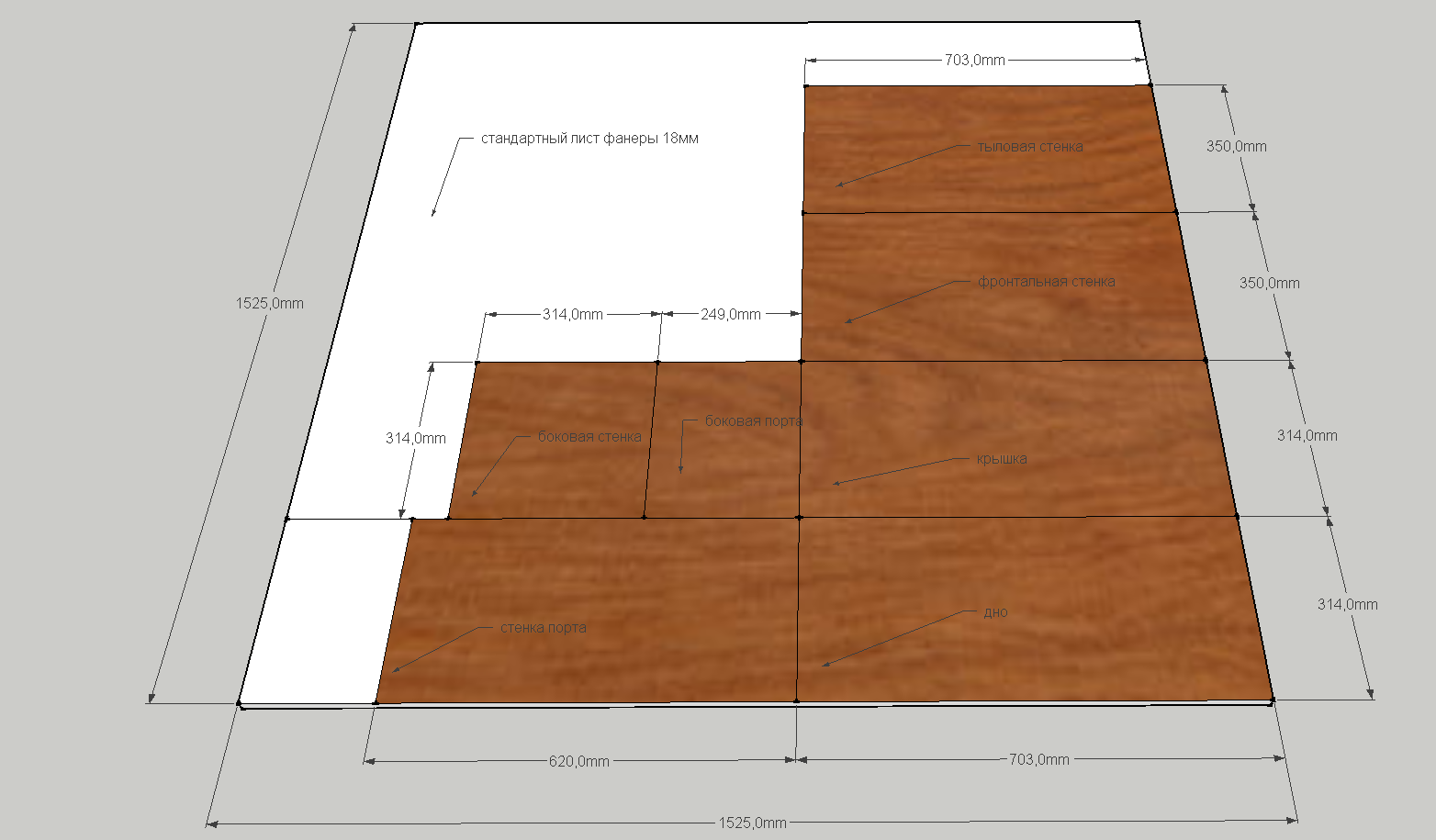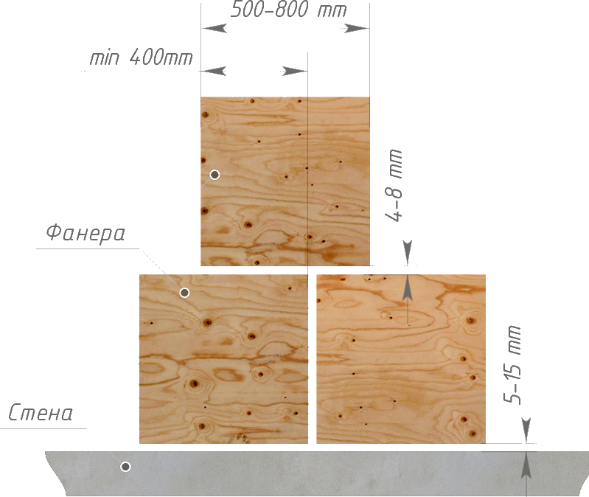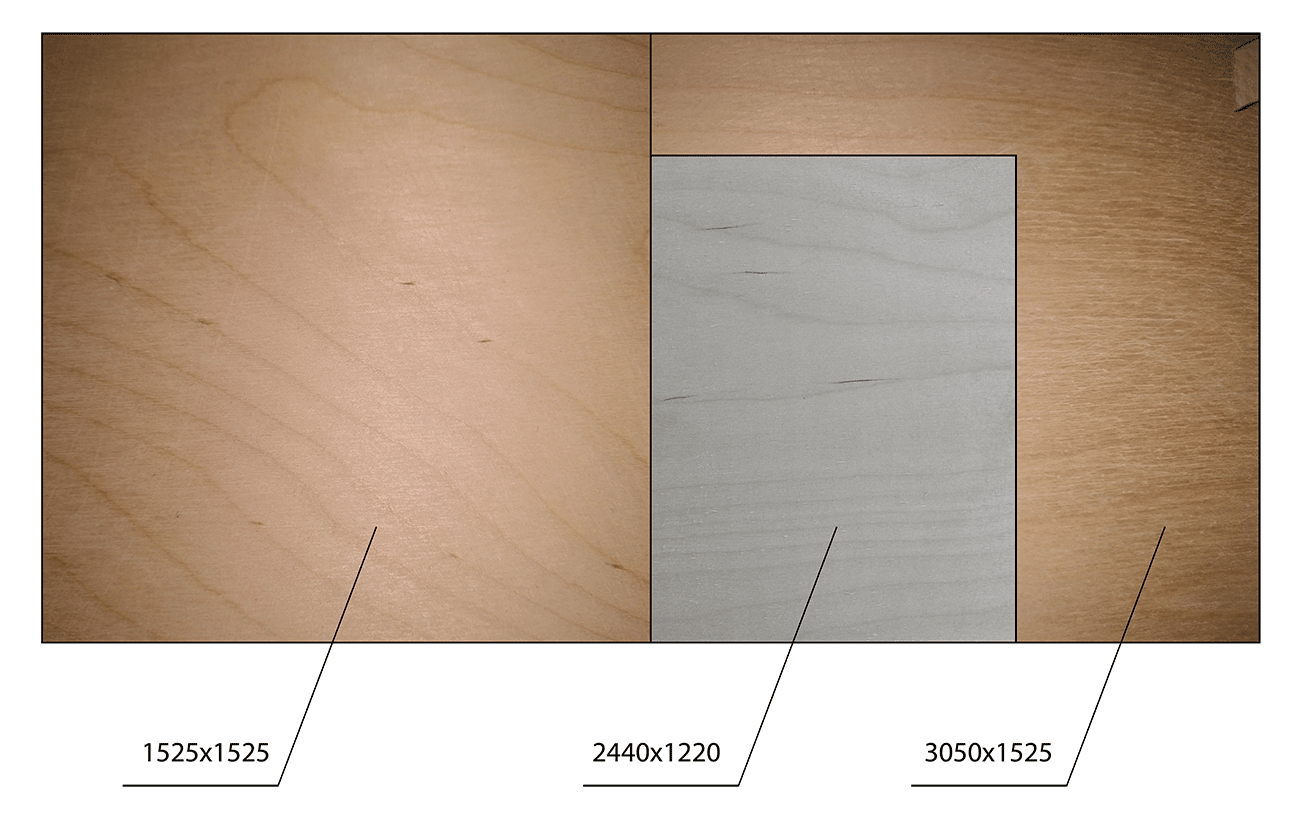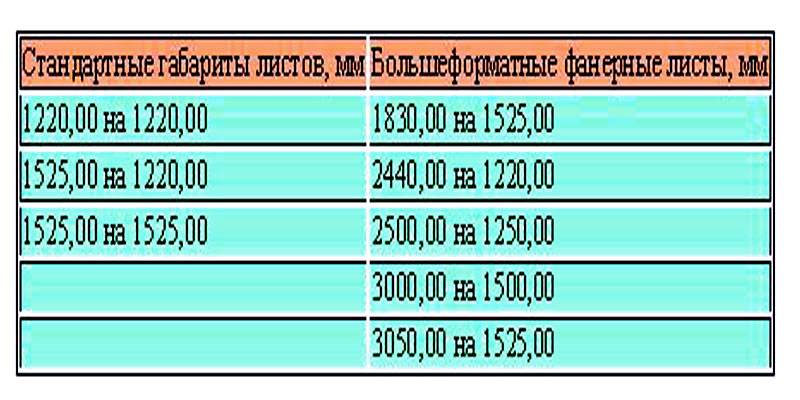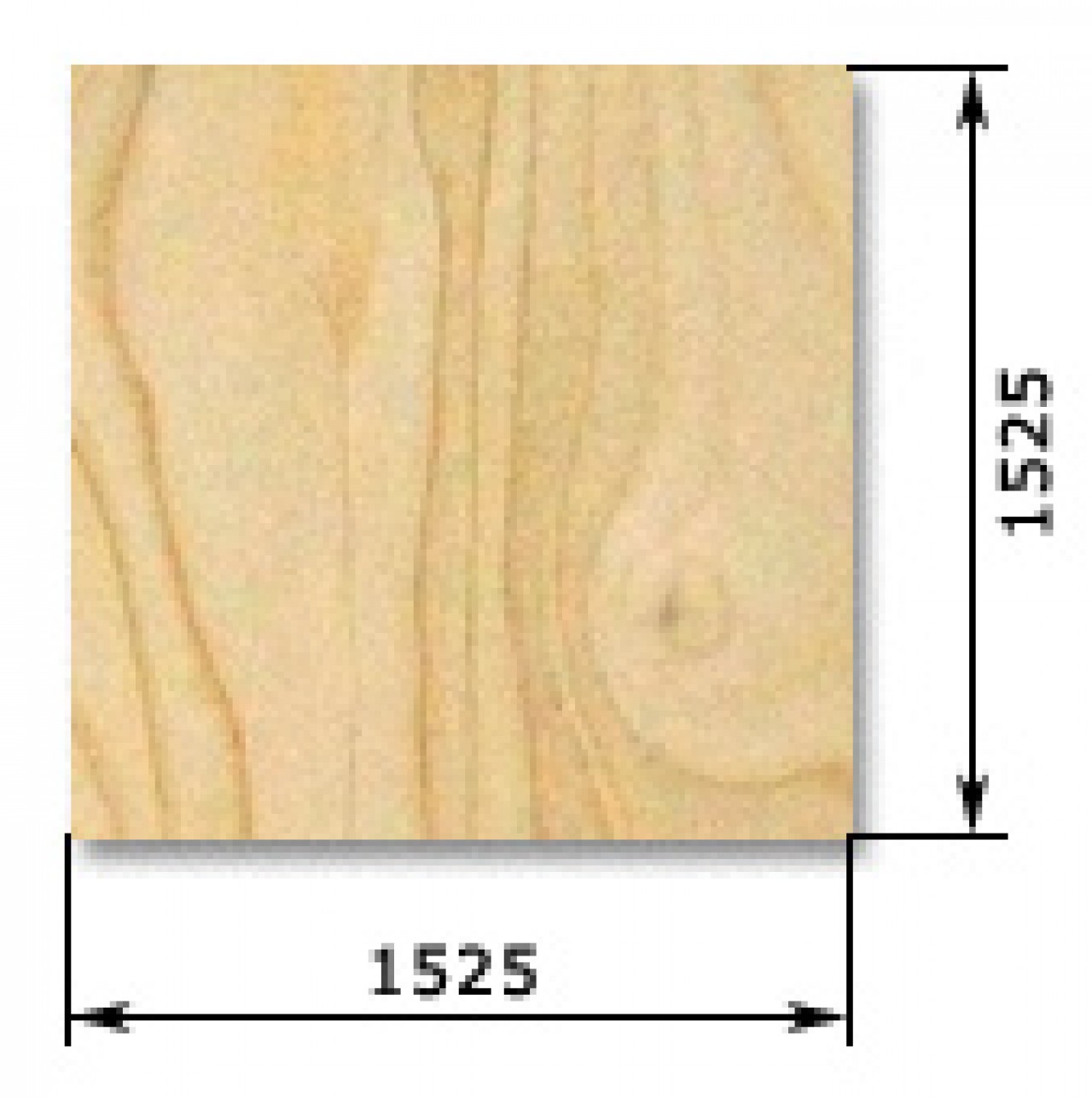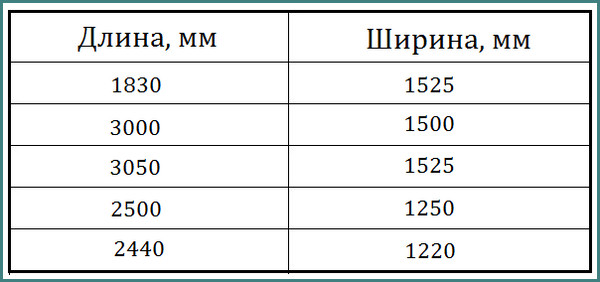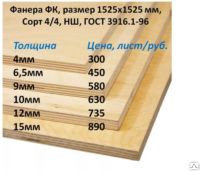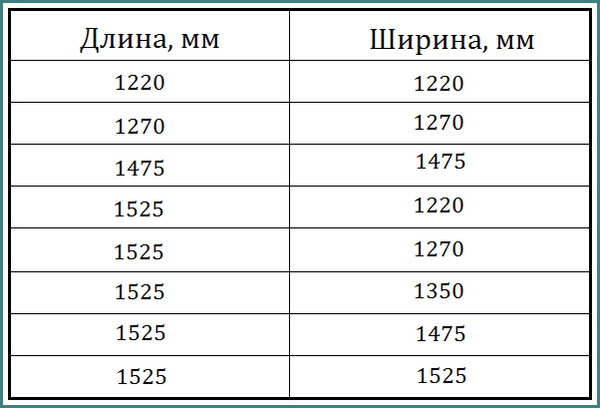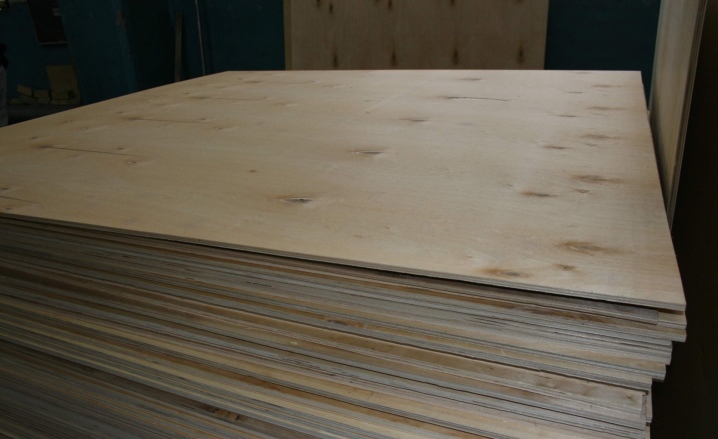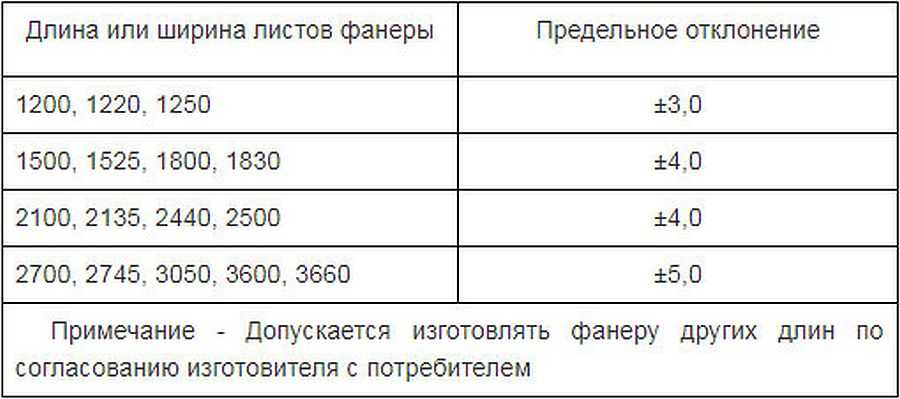Types of plywood and its classification
Plywood is a well-known and popular sheet building material for a long time. It has high flexural strength, both in the longitudinal and transverse directions. In private households, it is used for sheathing frames, flooring. Cheap grades are also used in some construction processes.
Plywood is made of several veneer layers glued together.
The fibers are layered in different directions. This increases the flexural strength of the material in all directions.
Plywood is one of the most famous and popular sheet materials in construction.
Plywood is made from softwood and birch. Birch is more expensive, more often used as furniture. Coniferous is made from all coniferous wood. Cheaper options - from larch, pine and spruce - can be used both for the manufacture of furniture and for construction needs (for example, for frame cladding or for removable formwork in the manufacture of concrete products). They can use Siberian cedar veneer. This type usually comes as a finishing material.
Layers and their number
There are at least three layers in plywood, but maybe more. The layers are arranged so that the veneer fibers are directed in different directions - alternately along the long side of the sheet, then across. An odd number of veneer layers is more common. In private housing construction, three and five-layer plywood is most often used. In this case, the orientation of the layers is selected relative to the central layer.
Layers are perpendicular to each other
If on the outer layer the veneer fibers are directed along the long side, the plywood is called longitudinal. It has great flexibility. If the veneer fibers are located along the short side of the sheet, plywood is called transverse and is used where high bending stiffness is required.
Moisture resistance
Since glue is used in the manufacture, the entire material has a fairly high degree of water resistance. There are several popular brands of plywood:
- Moisture resistant marked with FC. For its gluing, a glue based on carbamide-formaldehyde resin is used. That is, there is formaldehyde emission. With emission class E1 and below, it can be used indoors or for the manufacture of furniture.
-
Plywood of increased moisture resistance - FSF. The same glue is used only with water-repellent additives. Can be used for outdoor use.
- FSF-TV. The same water-repellent plywood but with flame retardant additives.
- Laminated - practically insensitive to moisture.
If you are looking for material for indoor use and don't want to worry about formaldehyde in the air, look for the FBA brand. It is environmentally friendly, but only suitable for rooms with normal humidity. The FB brand does not swell even under water, there is also BS aviation plywood. She still does not react to chemical environments. It was used in the construction of ships and airliners.
Surface finish
The outer layers of plywood can be sanded during production. There are such types:
- Unpolished. No surface treatment. Marked with NSh.
- Only one side is sanded to smoothness. Sh1 is added to the marking.
-
Both sides are sanded - Ш2.
Plywood sanded on both sides is used for the manufacture of furniture. For construction sites, both smooth sides are rarely needed. Usually, if polished is used, then Ш1. And then, if this material is used for decorative cladding. More often at a construction site, an unpolished one is needed - it provides better adhesion to other materials.
Raw materials and surface treatment
Plywood sheets are made from both soft and hard wood raw materials. Additional processing improves the performance of the material.

Conifers
Coniferous veneer is used for the manufacture of plywood for furniture, and it can be located throughout the entire thickness of the product or only in the outer planes. When placing coniferous veneer on the outside, hardwood material is used as internal layers, and the product belongs to combined types. The most common plywood is from pine, spruce, cedar, and larch are also used.

Birch, poplar and other hardwoods
Birch veneer is used for the production of multifunctional plywood products for a wide range of purposes, the use of which can only be restrained by higher prices than for needles. Currently, the market is filled with Chinese poplar veneer plywood; the price of the material is very small, the quality is poor.

In addition to birch and poplar, alder, aspen, linden, beech, maple are used for the outer layers. The product gets its name from this particular layer. Plywood sheets coated with veneer of oak, ash, exotic species are used for the manufacture of decorative carved panels. Compared to wood, they have a lower price, and in beauty they are in no way inferior to it.
Sanded and non-sanded sheets
Sheets of all sizes are subject to surface treatment, which can be carried out according to different algorithms. Unsanded plywood (NSh), which is used as a technical material for rough finishing and manufacturing of packaging containers, has low prices. During operation, on a rough, rough surface, cracks, chips and flaws may appear.
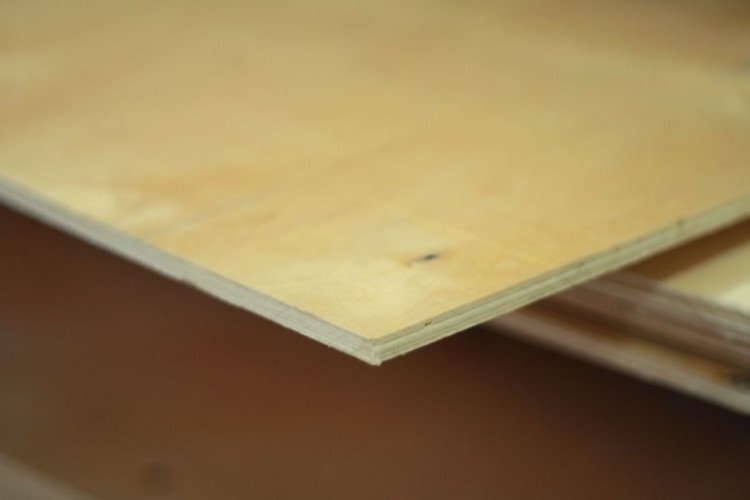
The sanded surface significantly improves the decorative properties of plywood, allows it to be used for furniture production, interior decoration of rooms. Grinding can be performed from one (Ш1) or two sides at once (Ш2); the process significantly increases the moisture resistance, durability and, accordingly, the price of plywood sheets of all sizes.
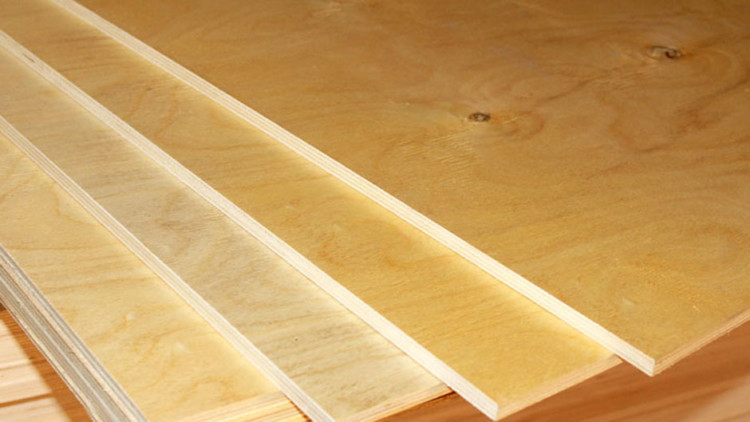
Laminated products
Laminated types of plywood, on the surface of which a layer of hardened oiled paper is fixed, have increased resistance to abrasion and other mechanical influences. This type is sometimes called formwork, since it is often used to equip reusable formwork. Durable laminated panels serve as partitions on ships, they are used for subfloors, playground elements, and outdoor furniture.

For the formation of some types of laminates, resins from phenol, melamine, polyvinyl chloride agents are used. The polymerized coating is used to finish sheet surfaces and ends of any size, which ensures the durability and durability of products, and their high aesthetic qualities.

Marking
You need to choose plywood sheets with knowledge of the matter, carefully examining the marking, which contains all the information about the product. According to the generally accepted standard, the labeling must indicate the name of the country in which the material was made, the trademark of the manufacturer. If the buyer makes a request for a whole package, he should see the exact number of sheets in the description. They also indicate the brand of plywood, the species from which the wood raw material is made, the grade, all sizes, the category of sanitary safety, the quality of the surface layer processing.

The absence of any of the specified parameters in the accompanying documents, labeling is unacceptable, indicates the manufacturer's dishonesty. If the customer has doubts, you need to carefully consider the products. You can check the conformity of the dimensions of any sheet from the package to the dimensions announced or indicated by the manufacturer.
Classification by the composition of the adhesive impregnation
Technical characteristics, sanitary safety, directions of use are largely determined by the composition of the means with which veneer sheets are glued.
Plywood is a well-known material for the production of which both historically established gluing technologies and innovative methods and composites are used. In addition to traditional types, decorative plywood is produced using expensive types of wood or paper with a texture pattern. According to the method and material of seams gluing, five main groups and several subgroups can be distinguished.

FBA
FBA-products have the safest adhesive impregnation, consisting of two protein fractions:
- albumin;
- casein.
Environmental friendliness of plywood is associated with insufficient water resistance, because protein substances tend to swell in the presence of water. Sheet products are not recommended for use in rooms containing wet vapors, can be used for the production of furniture, the manufacture of decorative elements for finishing dry rooms.

FC
Products with the abbreviation FC in the marking are made by joining veneer with urea adhesives that do not emit harmful vapors into the surrounding space. The material is relatively resistant to moisture and can be used to decorate rooms with a moderate concentration of water vapor.

FKM
The products of this group demonstrate good resistance to moisture, and have confirmed their absolute safety for the ambient air. Melamine glue, by means of which the veneer is connected, does not fonite, does not become a source of harmful fumes, which makes it possible to use FKM products for interior decoration of any premises, for the manufacture of furniture.
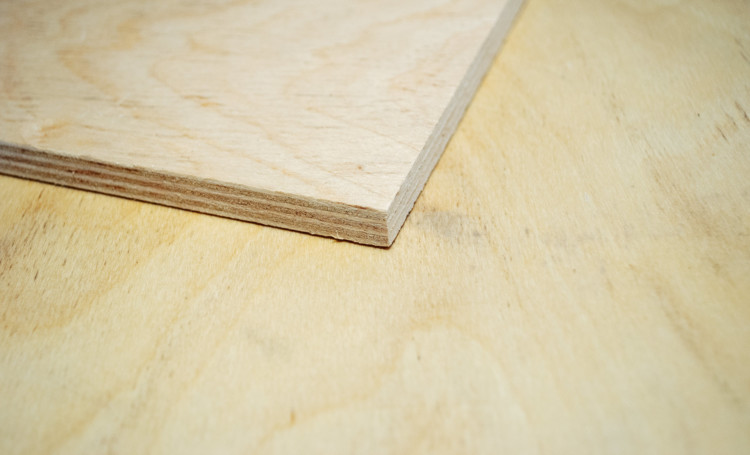
FSF
Plywood with the designation FSF has an increased resistance to moisture, which is due to the use of phenol-formaldehyde resinous polymers for gluing sheets. The adhesive may contain a residual amount of monomeric aldehyde, which evaporates during use of the material. The regulations allow the use of FSF sheets of different sizes for exterior finishes, the production of outdoor furniture.

FB
FB-products are obtained using bakelite compounds that are resistant to moisture and high thermal influences. The ability to withstand heavy loads from the environment allows the material to be used in aggressive spaces, for example, in seawater. Bakelite products can have different modifications, soluble in alcohol or water. Depending on the characteristics of the bakelite agent used in the production of plywood, it is divided into two subgroups: FBS and FBV.

The material with the abbreviation FBS (or BS) has maximum resistance to all types of impacts, which allows it to be used for finishing aircraft and sea vessels. Plywood glued with an alcohol-soluble bakelite agent has flexible properties and is easy to use. Ceiba veneers from the tropics are especially flexible.

Flexible plywood is divided into subgroups depending on the features of applying to the adhesive sheets:
- FBS - of the highest quality (thorough impregnation);
- FBS 1 - of moderate quality (coated with glue);
- FBS 1A - quality satisfactory for some types of work (smearing only longitudinal sheets).
FBV (or BV) is an abbreviation for products glued together with water-soluble bakelite. The material is also subdivided into subgroups. FBV plywood is completely thoroughly impregnated; FBV 1 sheets are obtained by smearing each sheet. The products are of excellent quality, only you need to take into account the susceptibility of PVF-material to moisture.

By destination
Also, plywood is very convenient to classify according to the methods of application, which we will consider below.
This type of birch plywood is also called "marine". Consists of the FB brand, i.e. it is impregnated with the most moisture-resistant bakelite glue under high pressure and temperature.Therefore, it can be successfully used in the construction and decoration of ships, boats, yachts and other floating facilities, as well as, wherever a material is required that can withstand heavy loads and not deform from rotting during prolonged operation in conditions of constant humidity: ports, docks, berths and other structures.
Furniture

Furniture plywood must meet certain requirements, especially for childcare facilities. This is, first of all, environmental safety (absence of substances harmful to humans), durability (furniture, during operation, usually has considerable loads) and a beautiful appearance. FK birch plywood meets all these requirements, since its strength is higher than that of coniferous, and it is impregnated with non-toxic urea glue. For the front sides of the furniture, it is better to use the first and second grade.
Construction plywood is mainly plywood of grades 3/4 and 4/4, which is used in internal hidden works: pre-finishing of floors, ceilings, walls; construction of interior partitions, flooring, podiums; leveling of the "rough" floor, frame for a stretch ceiling, etc. Due to its lightness, strength, heat / noise insulation properties, ease of use, as well as low cost, it is used wherever there are no increased requirements for a beautiful appearance.

This type of plywood is made from the FSF brand, impregnated with formaldehyde glue under special conditions, as a result, in terms of strength and moisture resistance, it is sometimes compared with steel, since, having a high density, it easily resists prolonged mechanical stress. Such qualities are required in order to apply it in the most demanding industries: the construction of aircraft, helicopters, large and small ships; in the car building and automotive industry.
Formwork
Formwork plywood is used in the construction of a concrete foundation, therefore, it must have exceptional qualities in terms of strength, moisture resistance, resistance to adverse environments and various deformations (swelling, drying out, cracking, etc.).
All the specified quality requirements are met only by FB film faced birch plywood with the maximum number of layers (thickness 18 mm for walls and 21 mm for floor). The process of laminating sheets with a protective film greatly enhances the basic qualities of this building material: the density approaches almost 700 kg / m3, and the maximum strength is: along the fibers at least 55 MPa, across the fibers - at least 25 MPa. Due to these qualities, this material is durable and economical, i.e. after the construction of the foundation, the sheets can still be reused.
Decorative plywood has the FC brand and is made from various types of wood, but, of course, from the elite or first grade, because it is the naturalness of the surface pattern that is appreciated. Also, to preserve the appearance and other valuable qualities of wood, it is either laminated or coated with a special varnish. Main application: exterior and interior finishing, decoration, interior design, furniture, DIY crafts, etc.

It is also called "automobile" - it is laminated or mesh-ribbed (if you need a minimum of sliding) FSF plywood. Such plywood is used for the manufacture of various parts of trucks: upholstery of the metal frame of vans, flooring, door upholstery, etc. Due to their strength and moisture resistance, such parts can be operated for a long time without fear of deformation or wear. Also, the advantages include ease of installation - almost all work can be done by hand and with little time.
Coniferous or deciduous
Birch material will, of course, be more expensive. Why then? Such plates are used where special characteristics are needed. Combining the physical and mechanical properties of this wood and the layering of the material, we get a high-strength material.This quality is especially appreciated in the automotive industry, railroad car building, in those industries where strength is of decisive importance.
Birch chipboard is distinguished by its delicate color and unusual wood structure. Thanks to this, she fell in love with furniture manufacturers and designers. The latter use it in the interior and exterior.
The coniferous slab differs in its weight. It is lighter. In most cases, such plywood is made from pine. Firstly, it looks attractive. Secondly, with a low weight, it differs in strength indicators.
It is widely used in the construction of houses. Sheathing walls, covering the roof, lining the floor, erecting interior partitions. The needles tolerate fungal infection and rotting quite persistently. All this because the tree is impregnated with resins.
Plus, the sheets are bonded with phenol-formaldehyde glue. Such plywood is used in the manufacture of furniture, interior and exterior design.
Composite plywood is made up of alternating layers. One by one, thin layers of coniferous and deciduous species are connected. What is good about this material. It is sturdy and not expensive. What sets it apart. At the same time, he does not lose external indicators. Such plywood is attractive and is also often used in furniture making, decoration and construction.

Plywood: sheet dimensions, thickness
For different jobs, sheet material of different sizes may be more convenient. And plywood is no exception. It is produced in different sizes, which are usually divided into standard and not. Standard ones are spelled out in GOST (GOST 3916.1-96), non-standard ones are produced on order - for large companies or those formats that are more in demand in retail. Usually a plywood sheet looks like a rectangle, but it can also be in the form of a square.

There are plywood sheets rectangular and square
Standard plywood sizes
In general, different types of plywood are described by different GOSTs (GOST 2707, GOST 20907, GOST 102-75, GOST 3916.1-96) and they contain different mesh sizes.

The standard sizes may vary in different codes.
The most common small-format plywood sheets have the following standard sizes:
- 1220 * 1220 mm;
- 1525 * 1220 mm;
- 1525 * 1525 mm.
Small sheets of plywood are good because you can work with them without helpers. But a large number of seams is not good.
According to GOST 3916.1-96, it is allowed to produce plywood of non-standard length by agreement between the manufacturer and the consumer.

Plywood dimensions according to GOST 3916.1-96
In theory, combinations from the above list can be any. In practice, there are much fewer of them.
Large format
In some cases, it is more convenient to use large plywood sheets - the joints become much smaller. The most commonly used large-format plywood of the following sizes:
- 1830 * 1525 mm;
- 3050 * 1525 mm
- 3000 * 1500mm;
- 2500 * 1250 mm;
- 2440 * 1220 mm.

Plywood: dimensions and thickness are standardized by a large number of standards
No one has brought order to the standards, so theoretically you can find almost any size from those that fit into one of them. So, for example, according to GOST 102-75:
- The length of the plywood sheet can be from 1000 mm to 1525 mm. The length increment is 25 mm.
- The width can be from 800 mm to 1525 mm with the same gradation step - 25 mm.
Moreover, the maximum deviation in length and width is 4 mm. The thickness of plywood can be from 1 mm, but this is a rare "aviation" grade. Plain comes in thick from 3 mm to 30 mm, but can be found up to 40 mm. The permissible error in dimensions in thickness is 0.5 mm.

There are standards governing the size of softwood and hardwood plywood
If you study the later standard 3916.1-96, it indicates a different grid of plywood sizes with a specific listing of possible values (see table above).
Thickness
With the thickness of plywood, the picture is about the same: if you wish, you can find from 1 mm to 40 mm thick. The possibility is not excluded that there are thicker options. But most often there are slabs with a thickness of 6 mm to 27 mm.

Thickness of hardwood and coniferous plywood, layering and permissible deviations for sanded and non-sanded boards
By the way, interestingly, in any of the standards the maximum permissible deviation is spelled out - 0.5 mm
Which, taking into account the not always large figure, is not so small. And this deviation can significantly complicate the installation of the material on the floor.
The difference has to be corrected with thin pads, or, if it is small, grind off at the joints with a grinder.

